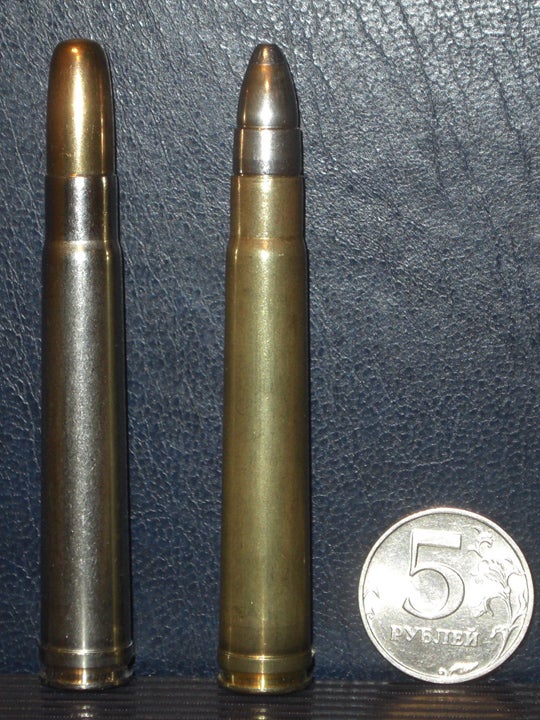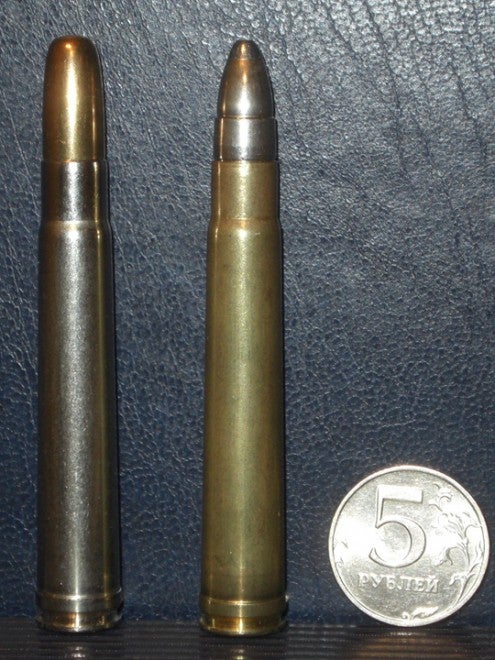Happy 100th birthday, .375 H&H Magnum! Why, you’re looking downright spry for your age, what’s your secret?
The .375 H&H is proof that sometimes you can get it right on the first try. Holland and Holland developed the round during a time when great technological changes were sweeping through the firearms world. Modern “smokeless” powder was proving superior to “black” powder in every way, redefining what was possible for cartridge ballistics. New rifles had to be designed to cope with the increased chamber pressure of these cartridges. The premier new rifle of the day was the Mauser ’98, featuring a very popular 9.3x62mm cartridge that soon spread worldwide. The Brits at Holland and Holland had to come up with a worthy competitor, or see those pesky Germans make off with all their business.
Their answer to Mauser was a classic. Holland and Holland knew that high velocity was key to hunting success in the new world of smokeless powder. Higher velocity cartridges shot “flatter”, dropping less as range increased, and experienced African hunters were reporting that high velocity rounds seemed to drop animals more quickly. Heavy bullets with good sectional density were also desirable, so H&H “got both” and put a big pill in front of a lot of powder, resulting in a maximum chamber pressure of more than 60,000 PSI. A 200 grain bullet would fly at over 3,000 feet per second and a 300 grain bullet would still do over 2,600 feet per second. If these numbers seem pretty decent now, they were darn impressive in 1912.

Two different .375 H&H loadings.
One problem remained to be solved. The big .375 cartridge initially used cordite as its propellant, and the shape of the casing had to be gradually tapered for the long cordite rods to be loaded in. A tapered shape was also useful to promote good feeding and extraction with such a long cartridge, but this meant headspacing was problematic. Holland and Holland put a “belt” around the base of the .375 casing, in front of the rim, to stop the round’s movement forward in the chamber. This was only the second time anyone had done this, but H&H had proven the concept with the .400/.375 Belted Nitro Express a few years before, so they were confident. As an added bonus, the belt prevented the accidental loading of a new smokeless .375 cartridge into any older rifle with an otherwise similar chamber. Remember, there were tons of older big bore rifles out there that would kaboom catastrophically if subjected to 60,000 psi chamber pressure!
The .375 H&H remains one of the most popular big-game hunting cartridges in the world. It is considered by most experienced African guides to be the smallest appropriate caliber for dangerous game, and in some jurisdictions it is legally the smallest caliber you can hunt those animals with. Recoil is much like shooting a .300 Win Mag out of a lightweight gun– manageable, but just barely. This allows for quick follow-up shots to be taken by the hunter, rather than by a backup hunter or guide. Many experienced hunters say that if they could have only one caliber, it would be the hard hitting, versatile, controllable, .375 Holland and Holland. So happy birthday, big fella! We’ll be seeing you for many years to come.

Remington’s 100th Anniversary .375 H&H safari rifle.
 Your Privacy Choices
Your Privacy Choices
